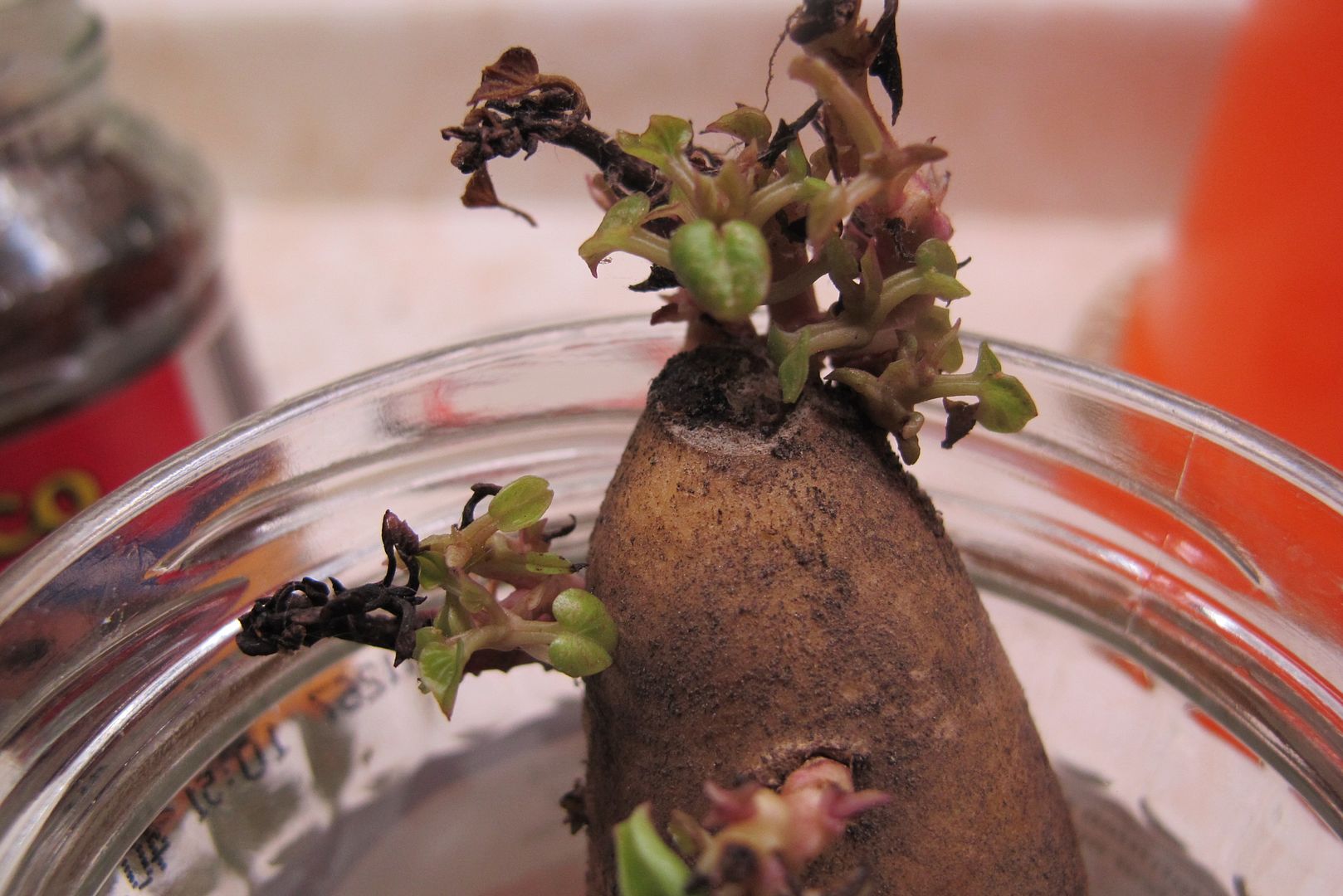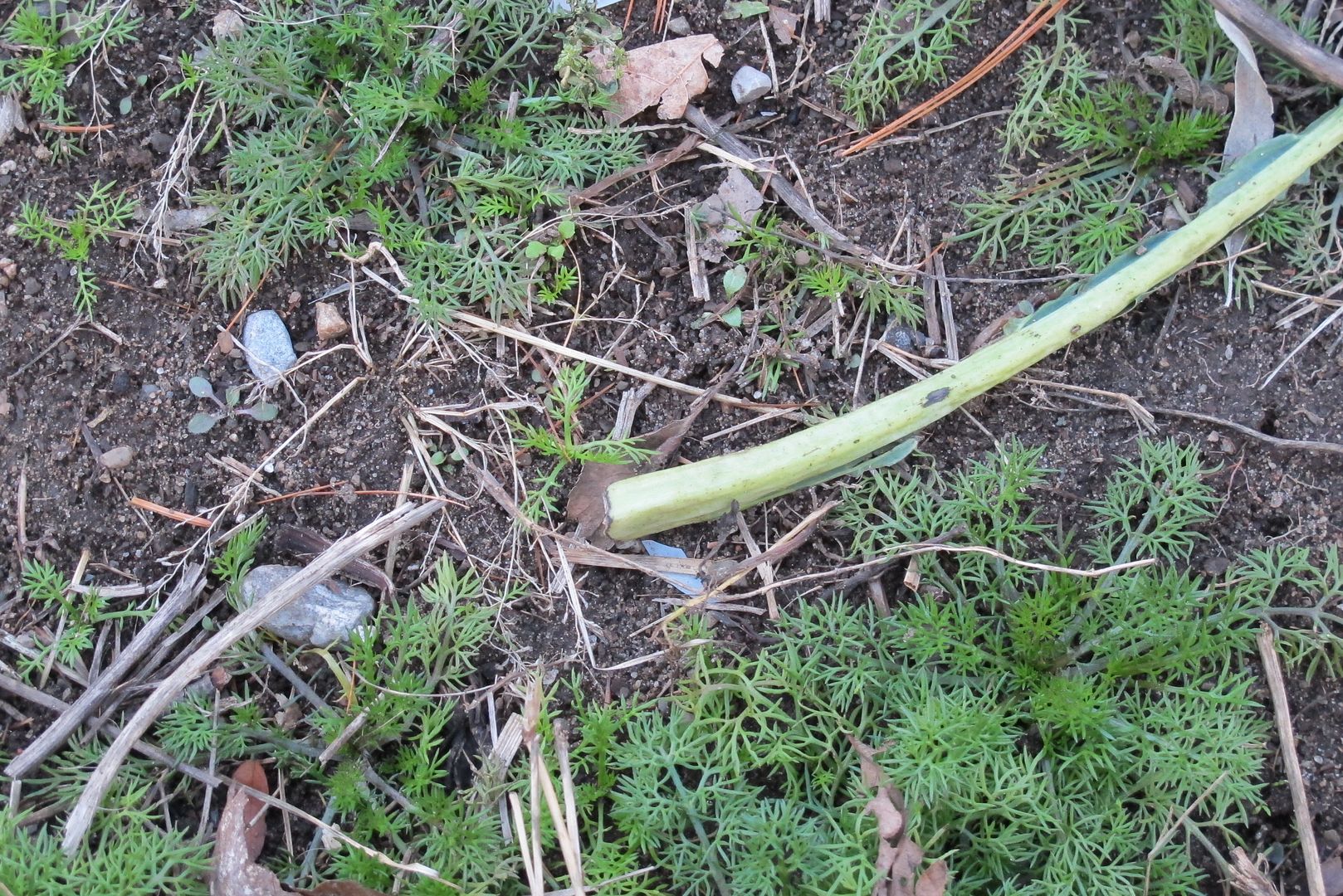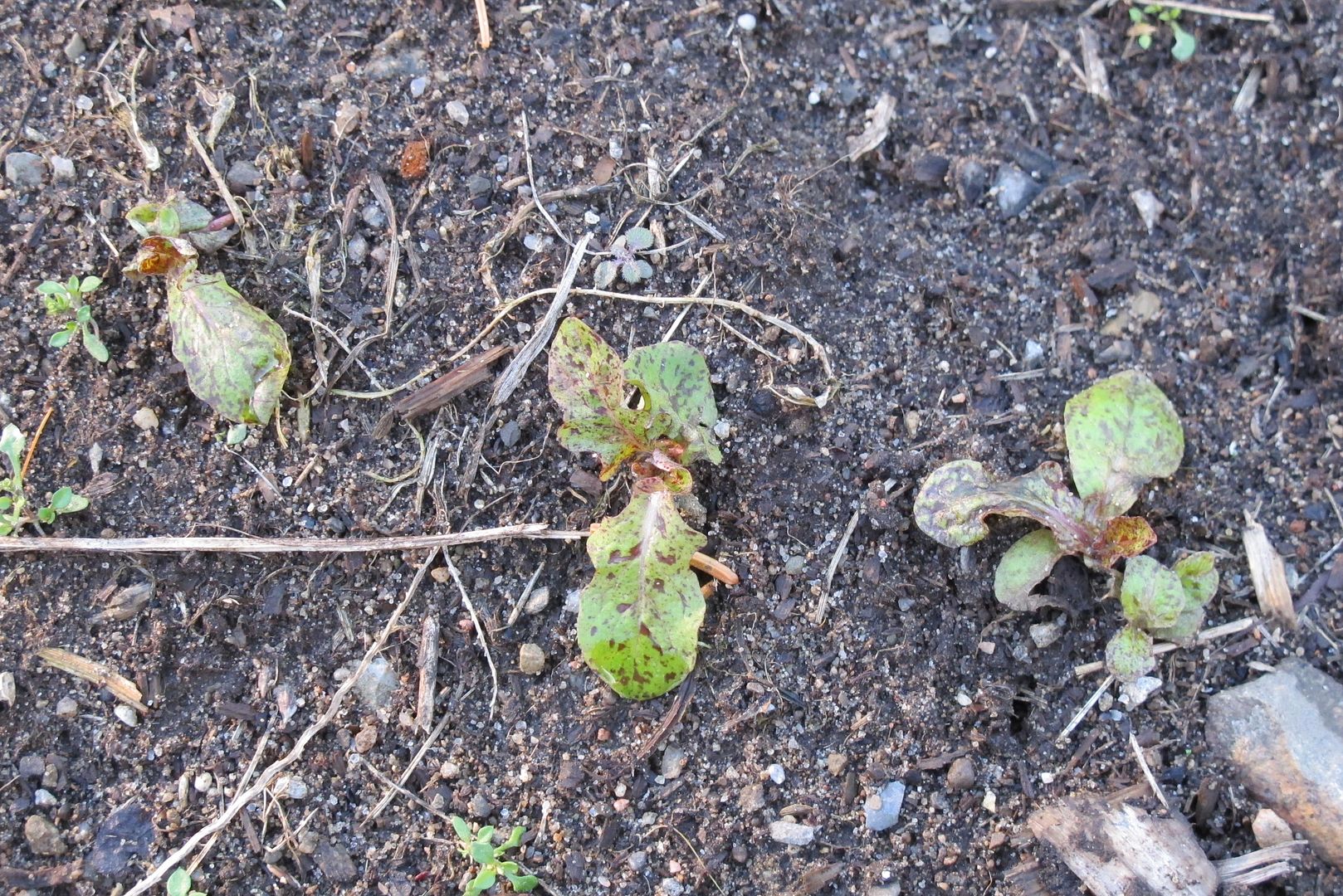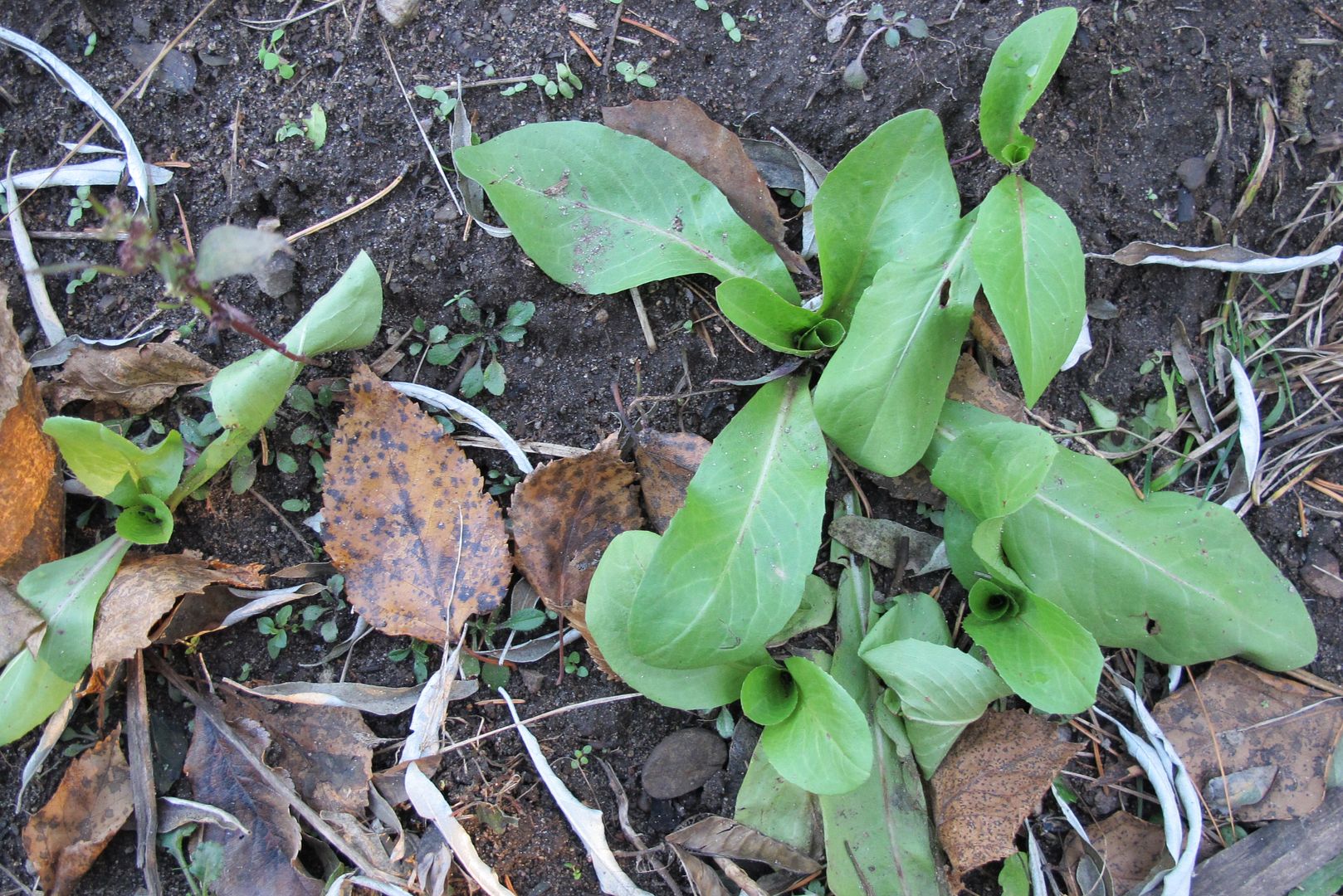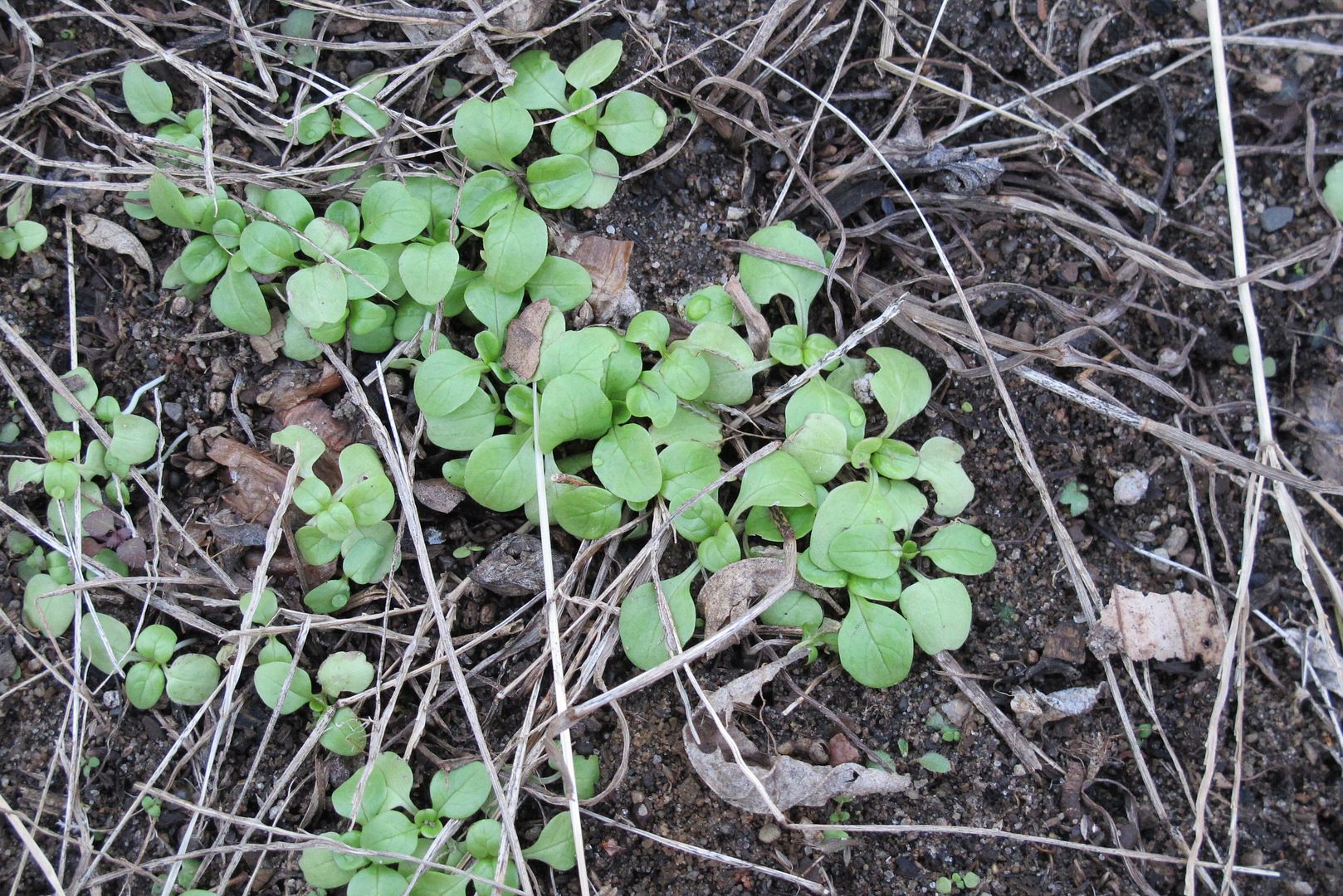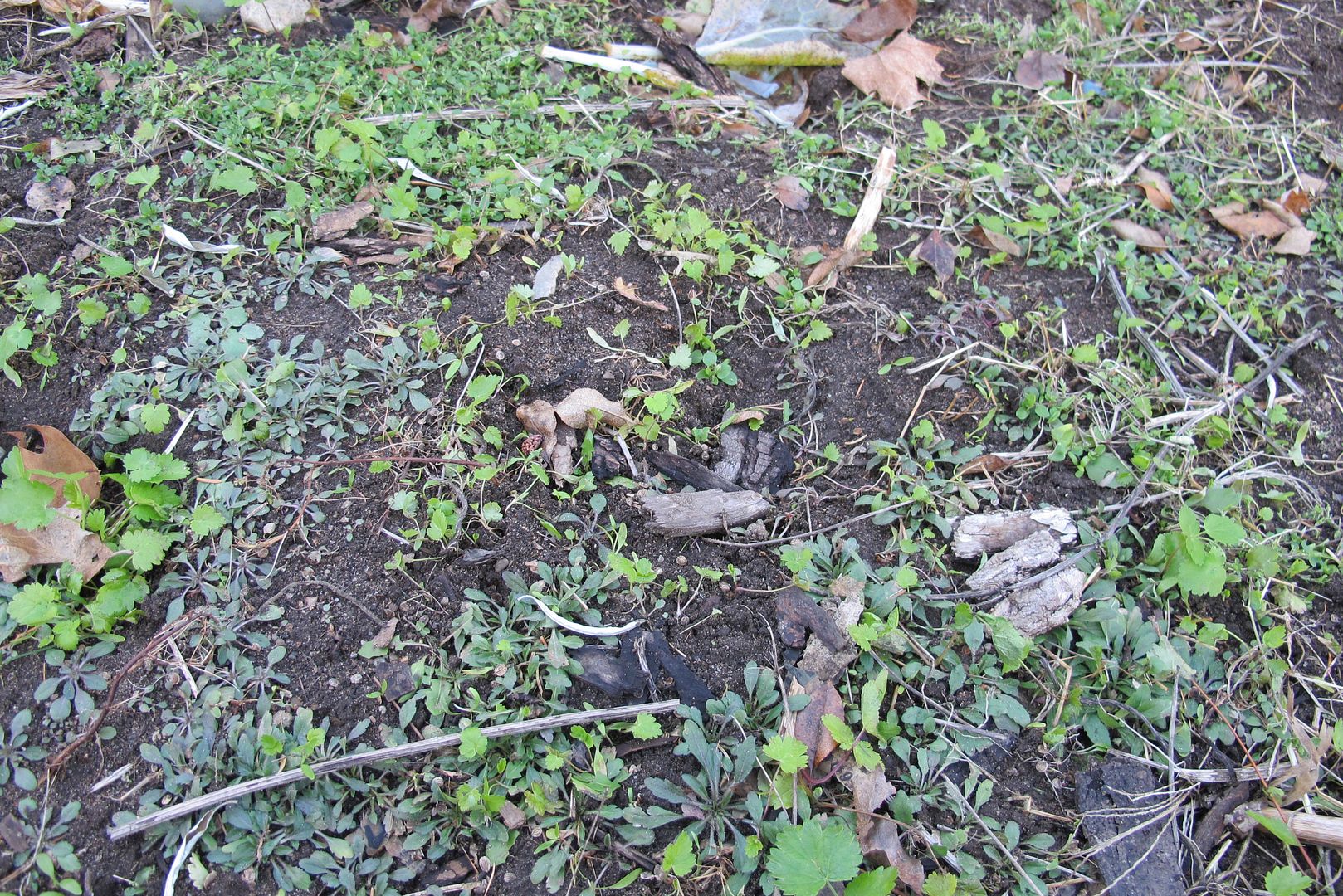Well, turns out that daylight sensitivity was not going to be my problem. My precious oca plant material was knocked off first by an unrelenting drought followed potentially by some sort of marauding bug - slugs? From the orchard batch, I collected exactly two mini tubers:
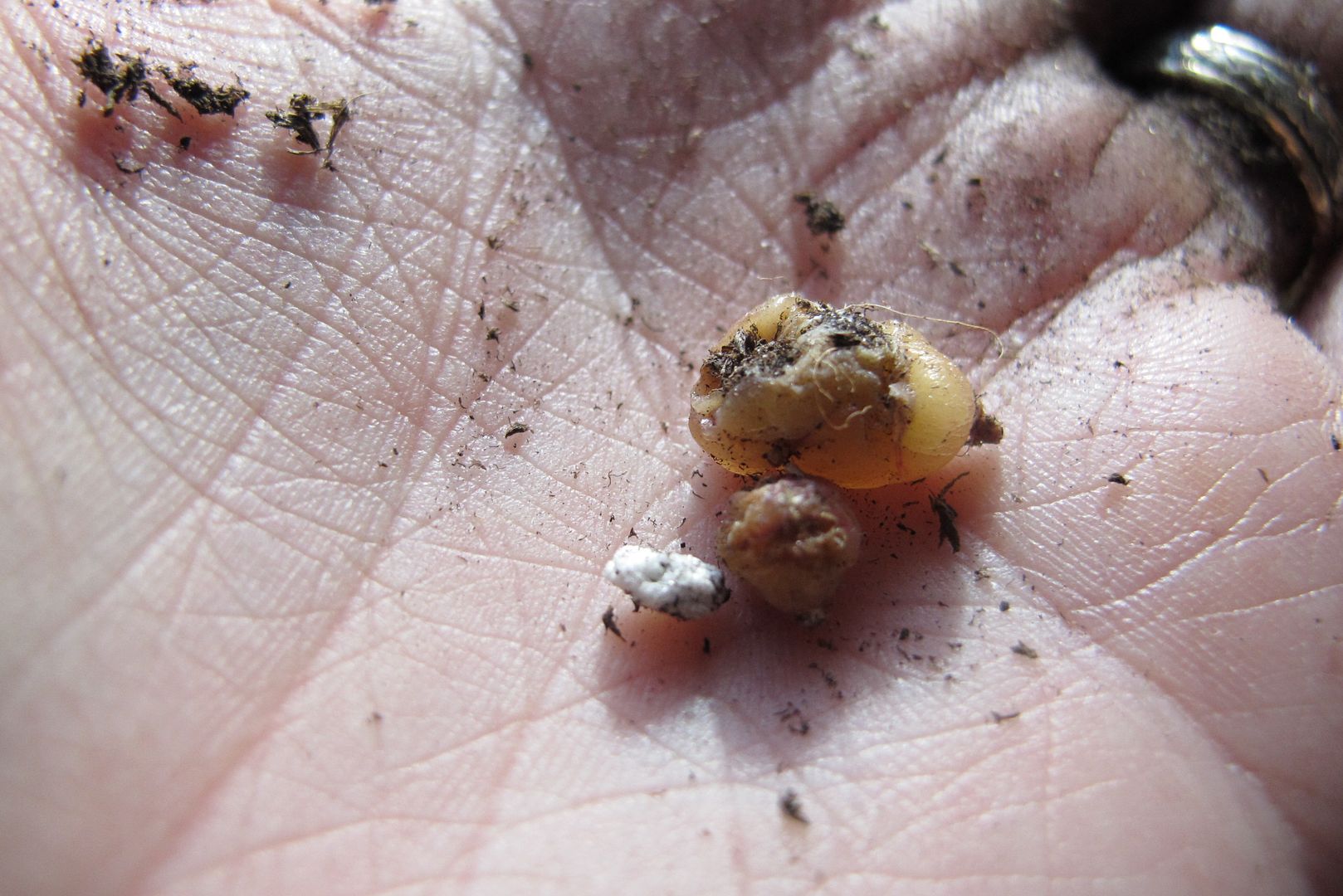
These mini tubers are drying out sides up. One is yellow with rose eyes and the other is yellow.
But I still had one beautiful pot of healthy plants. Today, I tentatively moved aside some soil, a bit discouraged to see that the stems seemed to be separated from the roots only to discover:
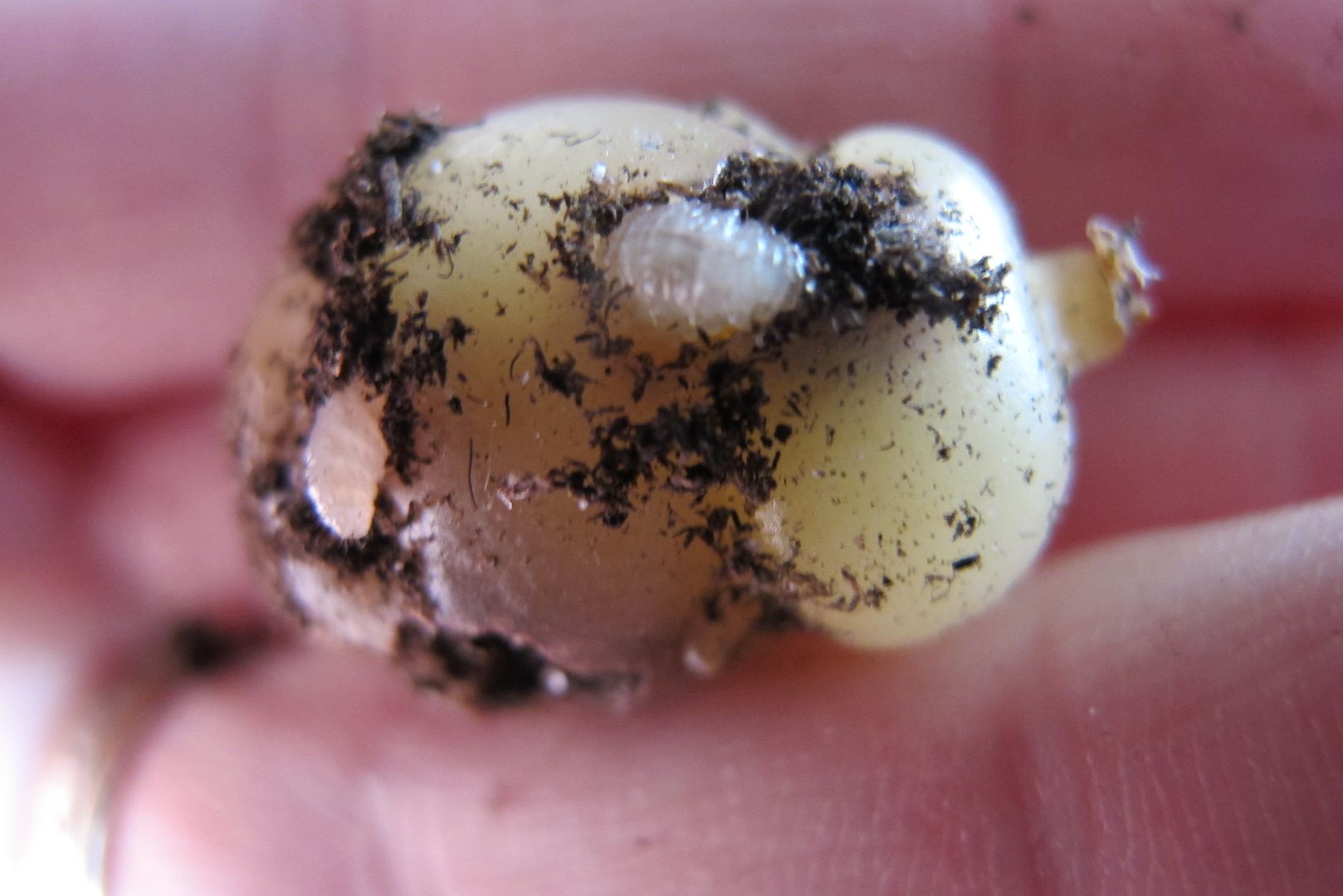
The juvenile delinquent of some critter eating up my tubers.
A tuber with a grub in it. So I figured I'd dig up the rest but only found one other tuber equally eaten. As I have had mystery grub damage in sweet potatoes, regular potato and garlic, this might be an issue endemic to my back garden. I am in the midst of trying to ID the culprit. The oca was grown in a pot at the back though not in the questionable garden, so it is possible that it came on the tuber stock. I will be tossing the pot and its contents just in case.
These grubbed up tubers won't store but I wonder if they would grow (once I spear the grub). I plan on trying to grow then overwinter some oca plants so I won't be totally without next year.
You lost me at oca
Oxalis tuberosa comes from the Andean area of South America where it has a rich history of use including references to eating the greens but mostly the tubers are used. They taste like lemony potatoes I hear. The sour taste comes from oxalic acid (hence the name) such as found in swiss chard, rhubarb and spinach. Depending on the variety, the concentration of the acid varies as does their preparation. I believe, the ones that you would could get your hands on in the North half of the world are mostly/fully the lower oxalic acid variety so they are eaten much like potatoes. Their leaves are quite pretty, looking like weedy sorrels that you may nibble on in salads.
From what I've read, it is a well known veggie in New Zealand simply referred to as yams but other than those two locations, isn't cultivated much (please correct me if you've been spooning them up since you were a babe in other coordinates). However, lately there has been a resurgence of interest with European bloggers like Rhizowen Radix* including it in his root crop explorations. In North America, it is mainly grown in coastal areas as it is daylight sensitive so that it waits until the days shorten before it forms tubers. It is also killed by hard frost. They are left in the ground after light frosts as rapid tuberization happens at this time. Most of the references I've read have harvests in November or December.
Other than that annoying quality (the day length, temperature thing), they seem to be low care crops. As they stand some shade and from what I've read are not heavy feeders, many gardeners try them in polycultures as in oca test-bed's tomato-oca duo.
Another plant in need of further adaption to a wider variety of climates.
*Attention edible plant geeks: go check out this awesome blog. All that alliteration was for you Radix!


